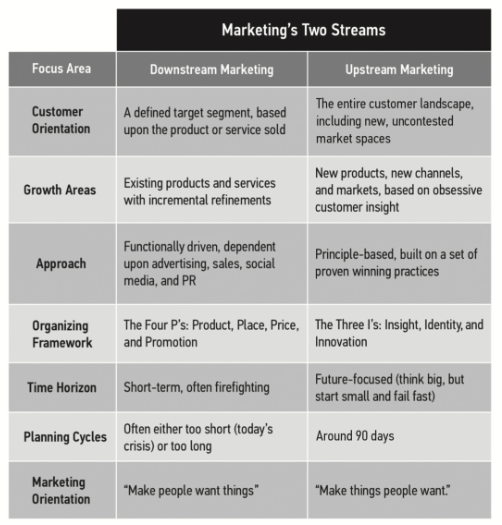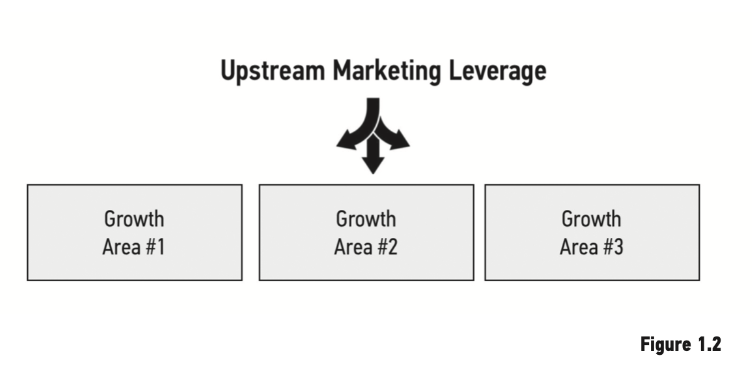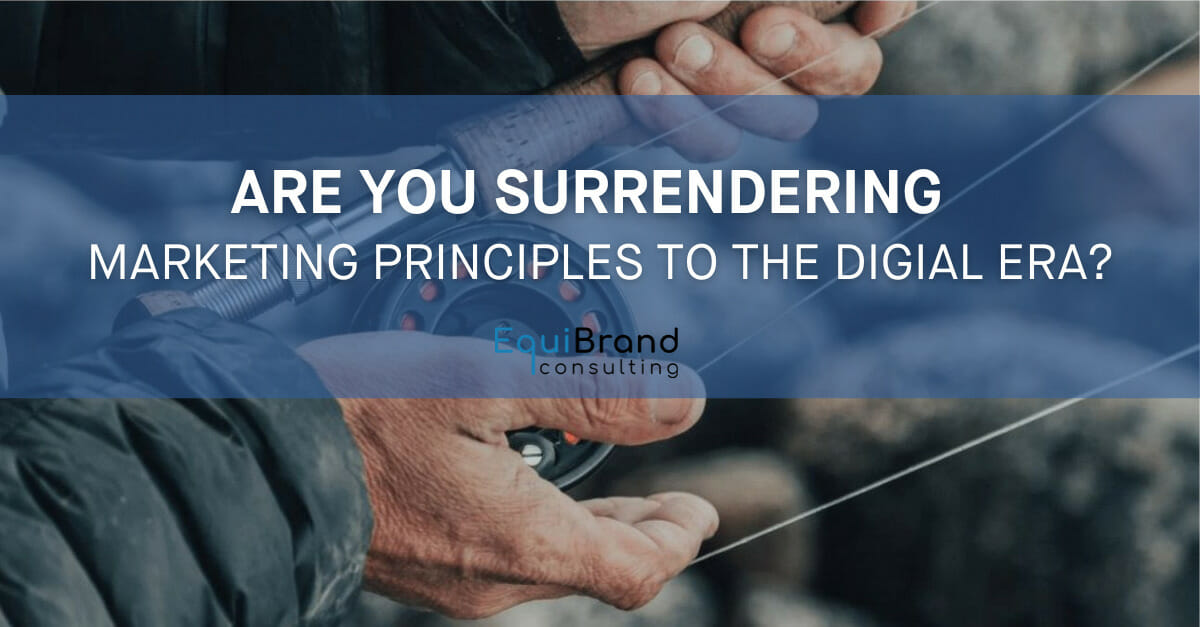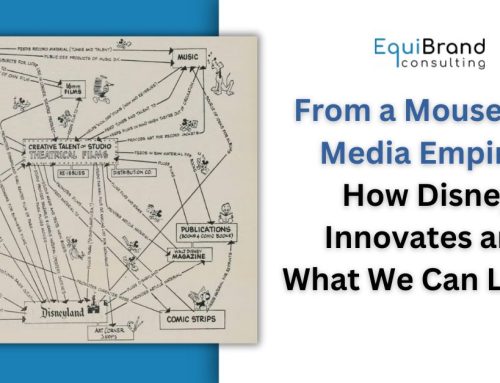EVER GONE FISHING? THINK of upstream marketing as everything that happens before the hook is in the water.
In fishing, the best anglers reflect and act on several factors before they cast their line. First, they consider the kind of fish, the casting, and the tools needed—the type of rod, reel, fishing line, and so on.
After answering a few other questions, like:
- Where exactly will they go to fish, which lake or river?
- Where within that lake or river? At what time?
- What’s the best bait?
…They are ready to bait the hook and cast it into the water.
The Essential Principles of Upstream Marketing
In doing all this, good anglers observe the essential principles of upstream marketing, thinking through the five W’s before integrating with downstream implementation (sometimes literally) in landing the target:
- Who
- What
- Where
- When
- Why
The idea of going upstream to uncover marketing opportunities is a proven concept. Yet, it lacks familiarity, understanding, structure, and practical instruction.
What’s the Difference Between Upstream and Downstream Marketing?
Top management consultant Dr. Ram Charan broadly defined the term in his book Profitable Growth Is Everyone’s Business. There, he talks about the need to “beef up upstream marketing” and explains how downstream differs from upstream this way:
Downstream marketing is what most people visualize as marketing. It involves:
- advertising
- promotion
- brand building
- communicating with customers via public relations, trade shows, and in-store displays
There’s no doubt these activities are extremely important. What do they all have in common? They tend to enhance the acceptance of a product or service that already exists. Further, companies spend an inordinate amount of money on downstream marketing activities, while ignoring critical upstream marketing activities.
Upstream marketing, by comparison, refers to the strategic process of identifying and fulfilling customer needs and building strong brands. Upstream marketing takes place at a much earlier stage by developing a clear market segmentation map, then identifying and precisely defining which customer segments to focus on.

Figure 1.1
It analyzes:
- How the end-user uses the product or service
- What competitive advantage is needed to win the customer
- …and, of course, at what price point
This is done very early in the product or service development cycle. Did you know? Upstream marketing is one of the missing links for generating revenue growth at many companies.
Figure 1.1 compares the two-stream parts, drawing on EquiBrand’s real-world experience to expand on Charan’s definition and highlight key differences:
Different Parts of the Same Marketing Stream
In considering upstream and downstream marketing, it’s crucial to ensure both are fully aligned and seamlessly integrated. After all, upstream and downstream marketing are different parts of the same stream.
While the figure above shows downstream and upstream side by side, upstream marketing should actually occur first, flowing directly into downstream marketing. Extending the stream analogy, a better visual representation has upstream situated at the top, splitting into several down-stream channels, as in the figure below:
Upstream marketing promotes economic leverage: A variety of downstream opportunities emerge from a singular focus on upstream principles. When you start with upstream, downstream flows more smoothly, uncovering multiple opportunities with fewer impediments.
To learn more about upstream marketing and how to become a successful angler in growing your business, we are offering a free download of our book Upstream Marketing. You can download the first chapter here.




















Follow EquiBrand